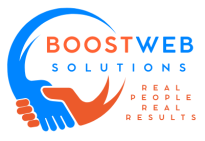Introduction
In a fast-evolving digital landscape, “digital optimisation” isn’t a luxury—it’s a strategic imperative. It’s the disciplined practice of aligning your online assets, content, and user experiences with how modern search engines and users discover, evaluate, and convert. From technical health and on-page signals to localisation, voice/search engine features, and AI-driven insights, digital optimisation drives visibility, relevance, and performance across the customer journey. This article unpacks what digital optimisation is, why you need it, and how to architect a holistic approach that integrates SEO, Search Generative Experience (SGE), GEO strategies, and the accelerating influence of AI and ranking algorithms.
What is Digital Optimisation
Definition: A data-informed, cross-channel discipline focused on maximising discoverability, relevance, speed, and conversions across websites, apps, and digital touch-points.
Core levers:
- Technical health: site speed, accessibility, crawlability, structured data
- Content optimisation: keyword-informed, user-focused, structured content
- User experience (UX): intuitive navigation, clear CTAs, mobile-first design
- Local and intent signals: GEO targeting, local listings, and intent matching
- AI-assisted insights: using AI to analyse data, generate content variants, and personalise experiences
- SERP positioning: understanding how ranking signals and features affect visibility
Why you need Digital Optimisation
SEO: The backbone of digital optimisation
- Technical SEO:
- Site speed optimization (Core Web Vitals), mobile usability, secure connections (HTTPS), clean crawl paths
- Structured data (schema.org) to help search engines understand content
- On-page SEO:
- Keyword strategy aligned to user intent, with topic clusters and pillar pages
- Optimized meta titles/descriptions, headings, and internal linking
- High-quality, user-focused content that answers real questions
- Content SEO:
- EAT principles (Expertise, Authoritativeness, Trustworthiness) in context of the topic and brand
- Content freshness where appropriate, and deep-diveness for cornerstone topics
- Off-page SEO:
- Quality backlinks, brand mentions, and PR signals
- Brand building and reputation management
- Measurement:
- Organic traffic, keyword rankings, click-through rate (CTR), dwell time, conversion rate from organic visitors
- Use of analytics and log-file analysis to understand crawling and indexing
SGE (Search Generative Experience) and its impact
- What is SGE: The shift where search results incorporate generative AI to synthesize answers, provide concise summaries, and offer follow-up prompts, often changing the traditional SEO playbook.
- Implications for optimisation:
- Content relevance and depth still matter, but positioning now includes optimization for knowledge sufficiency, answer quality, and trust signals.
- Snippet and answer-first thinking: craft content that can inform AI-extracted answers while driving users to your full pages for deeper engagement.
- Structured data and BERT-like understanding: ensure content is machine-readable, semantically meaningful, and aligned with user intent clusters.
- Practical steps:
- Prioritize comprehensive pillar content that addresses core questions and supporting subtopics.
- Implement Q&A style content addressing user intent and common follow-ups.
- Maintain high-quality, authoritative content that earns clicks beyond the AI-generated snippet.
GEO strategies: Localisation and geographic targeting
- Local SEO fundamentals:
- Optimise Google Business Profile (GBP) and consistent NAP (Name, Address, Phone) across directories
- Local keyword targeting: geo-modified terms and service-area descriptions
- Local content: case studies, testimonials, and resources relevant to specific locales
- Geographic intent and SERP features:
- Local packs, map results, and local knowledge graphs; ensure presence and accuracy in map listings
- Reviews and ratings as social proof; respond to reviews to boost engagement signals
- International/local cross-border strategies:
- hreflang and geo-targeting for multilingual sites
- Localized content variants and currency/measurement adaptations
- Measurement:
- Local pack visibility, map views/clicks, direction requests, and local conversion metrics
- Local keyword rankings and traffic by location
The emergence of AI in optimisation
- AI-assisted content creation and scoring:
- Generative AI to draft content briefs, outlines, or first drafts, followed by human refinement
- AI-powered content scoring to assess alignment with user intent and ranking signals
- Personalisation at scale:
- AI-driven personalization of messaging, CTAs, and content blocks based on user behavior and context
- Predictive analytics and testing:
- AI to predict which page variants will perform best and to automate A/B testing workflows
- Risks and guardrails:
- Avoiding spammy or low-quality AI outputs
- Ensuring accuracy, originality, and compliance
- Maintaining editorial control and brand voice
Algorithms, ranking signals, and SERP position
- How ranking works at a high level:
- Crawling and indexing to understand content
- Ranking through a complex mix of signals: relevance, authority, user experience, and context
- SERP features (snippets, cars, knowledge panels, people also ask) shape visibility and click opportunities
- Key signals to optimise:
- Content relevance: match intent, comprehensive coverage, semantic relationships
- User experience: page speed, mobile-friendliness, interactivity (e.g., CLS)
- Authority and trust: backlinks, brand mentions, E-A-T factors
- Freshness and accuracy: up-to-date information, accurate data, and clear authorship
- Local signals: GBP completeness, local reviews, and proximity relevance
- Algorithm evolution considerations:
- Focus on user-centric quality rather than purely keyword gymnastics
- Embrace structured data and semantic signals to aid understanding
- Adapt to AI-assisted SERP features by aligning content with expected AI answers and supporting evidence
- Measuring impact:
- Track organic traffic, average position, visibility score, click-through rate, and conversion from organic visits
- Monitor feature presence (rich snippets, knowledge panels) and core metrics across devices
Practical framework for a digital agency to implement optimisation
- Discovery and audit:
- Technical health assessment, content audit, backlink analysis, local presence review, and AI-readiness check
- Strategy development:
- Decide on pillar topics, content clusters, and GEO targeting plans
- Create an SGE-aligned content plan: define questions to answer, depth to cover, and supporting data
- Execution:
- Technical fixes: performance improvements, structured data, accessibility
- Content creation and optimization: new pages, refreshes, and schema markup
- Local optimization: GBP optimization, local landing pages, and reviews strategy
- AI-enabled workflow: content briefs, generation of variants, and personalization signals
- Testing and measurement:
- Establish baseline metrics; run controlled A/B tests for headlines, CTAs, and layouts
- Use dashboards to monitor SEO, SGE visibility, local metrics, and user engagement
- Governance:
- Brand voice and quality standards for AI-generated content
- Cross-functional roles: SEO specialists, content strategists, UX designers, developers, and data scientists
- Continuous improvement:
- Regular audits, refresh cycles for evergreen content, and ongoing local optimization
Real-world considerations and best practices
Conclusion
Digital optimisation is the strategic cockpit that coordinates SEO, local strategies, AI-driven capabilities, and the evolving landscape of SERP features. By building a framework that prioritises user intent, leverages data-driven insights, and remains adaptable to AI and algorithmic shifts, digital agencies can drive sustainable visibility, stronger engagement, and higher conversion rates for clients.
Regards, The ‘BOOST WEB SOLUTIONS’ TEAM



